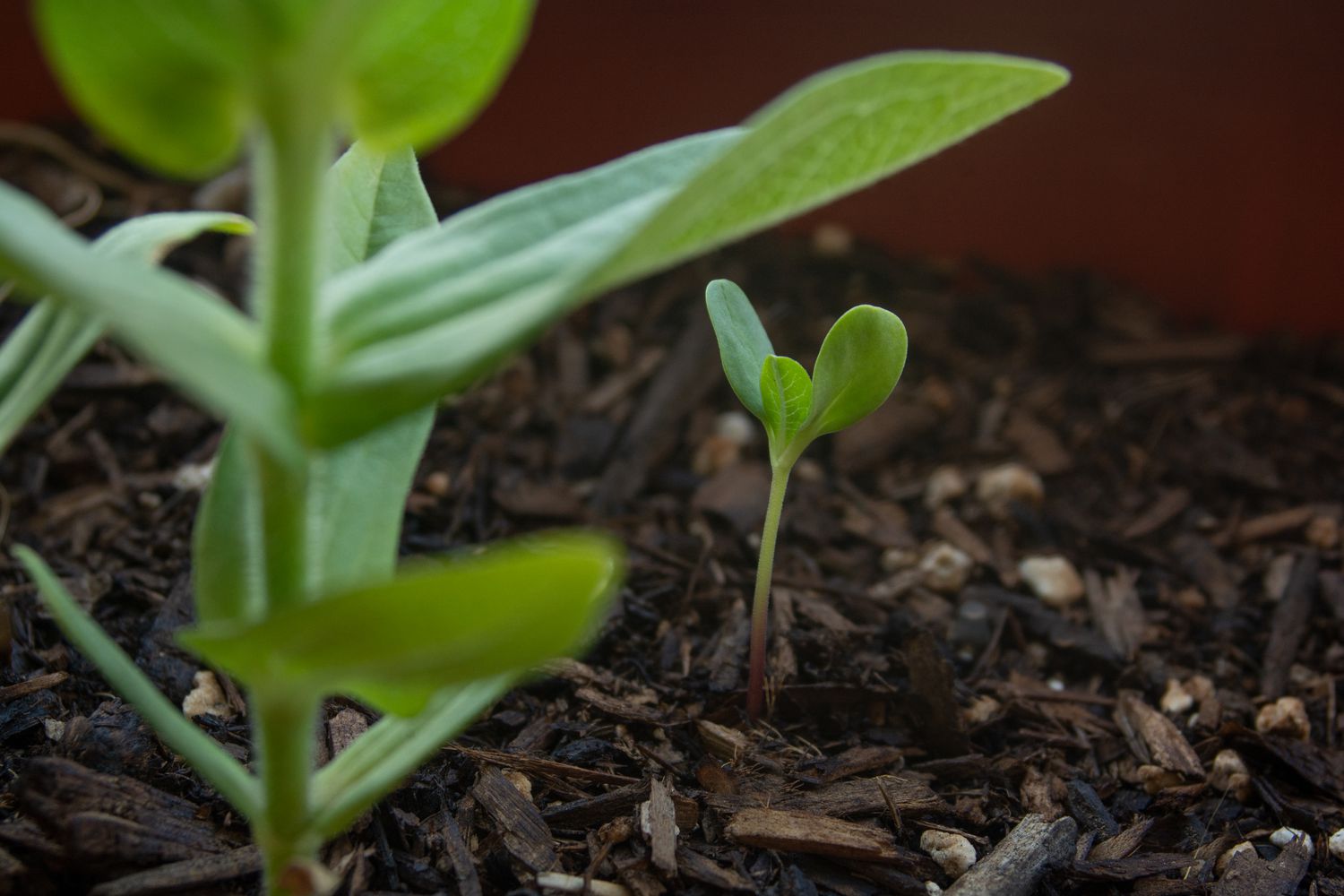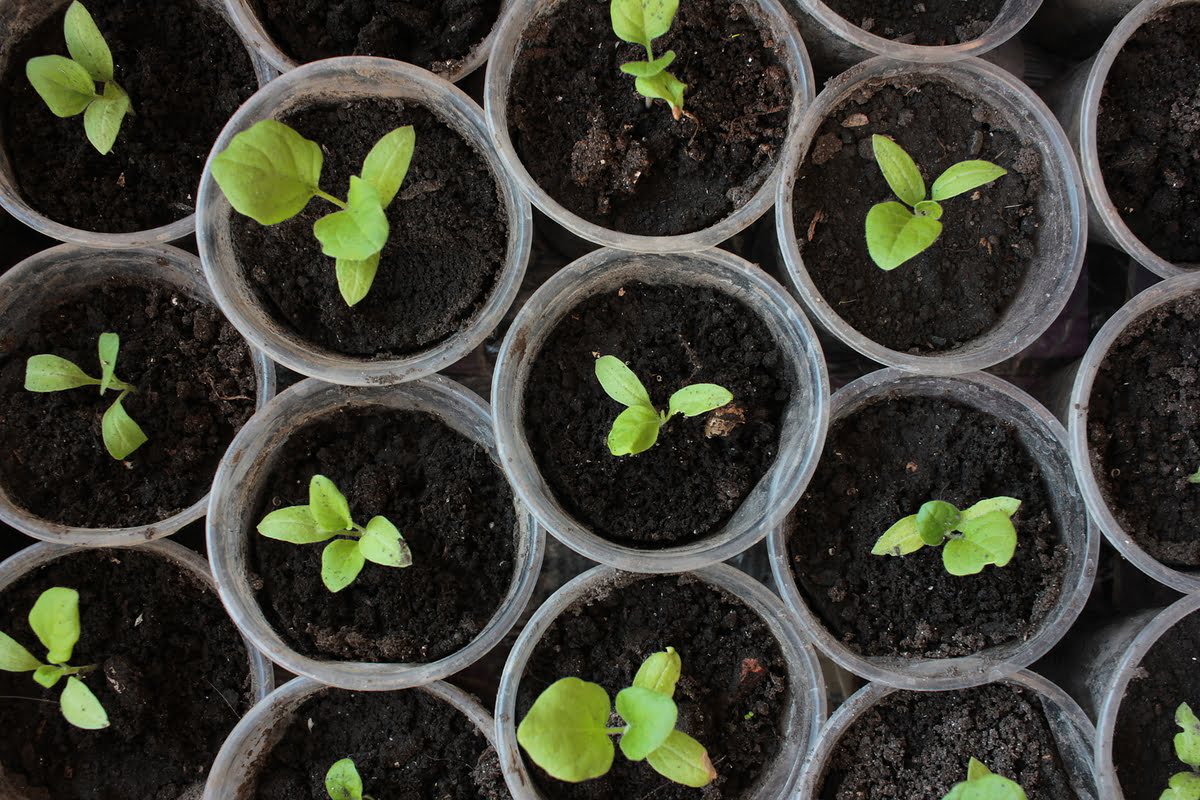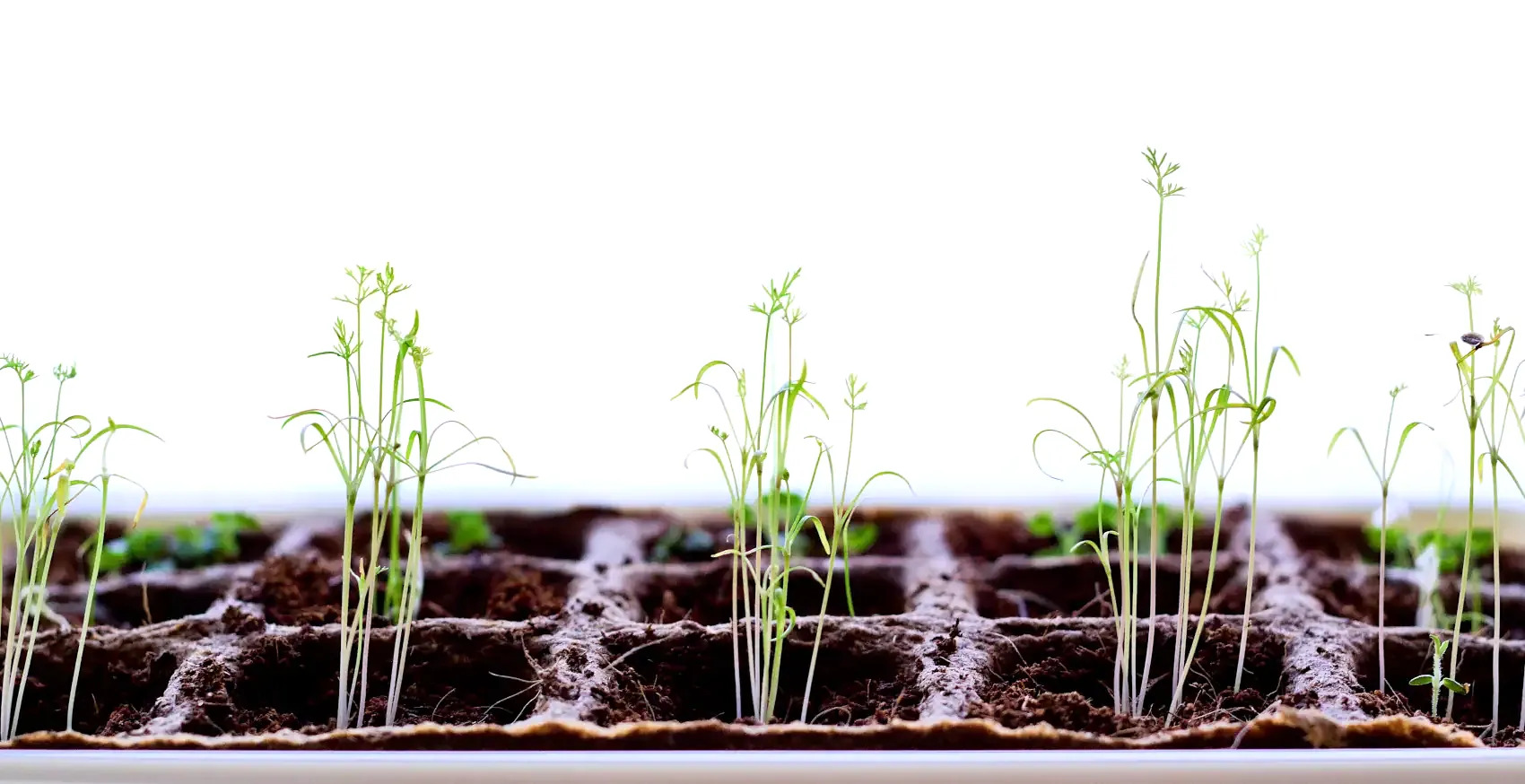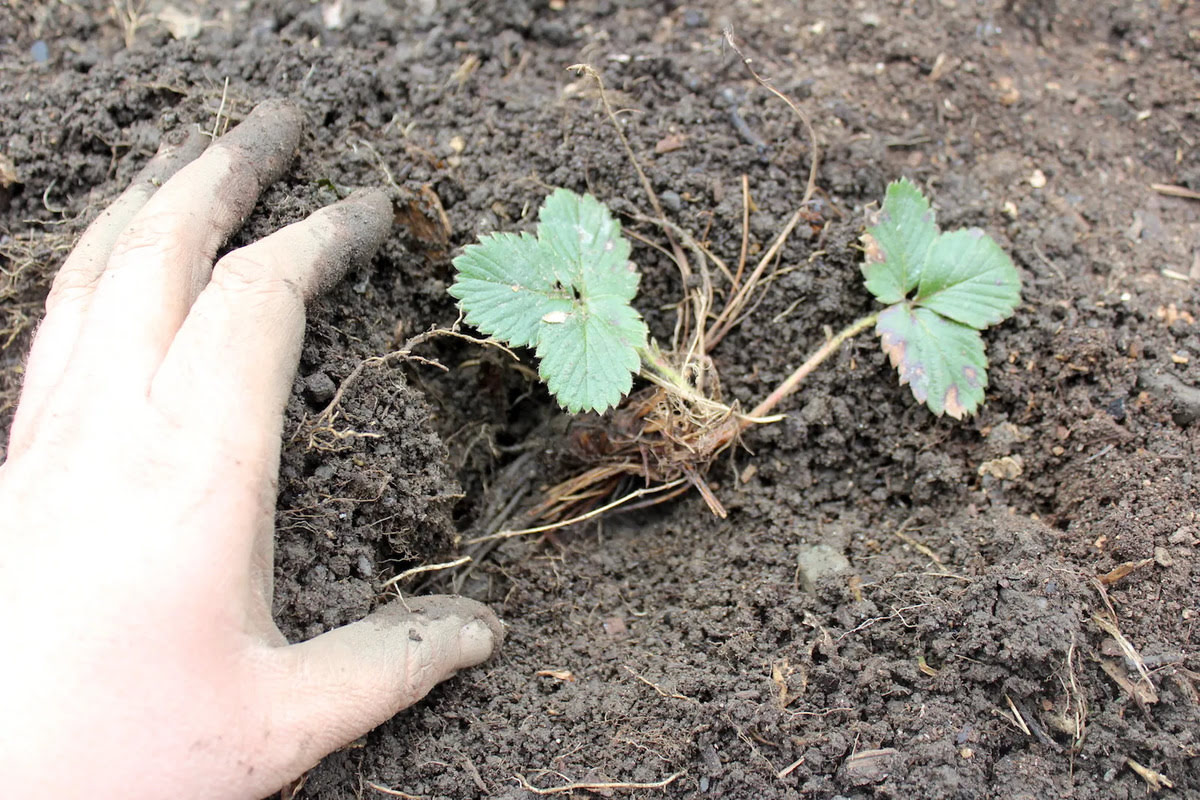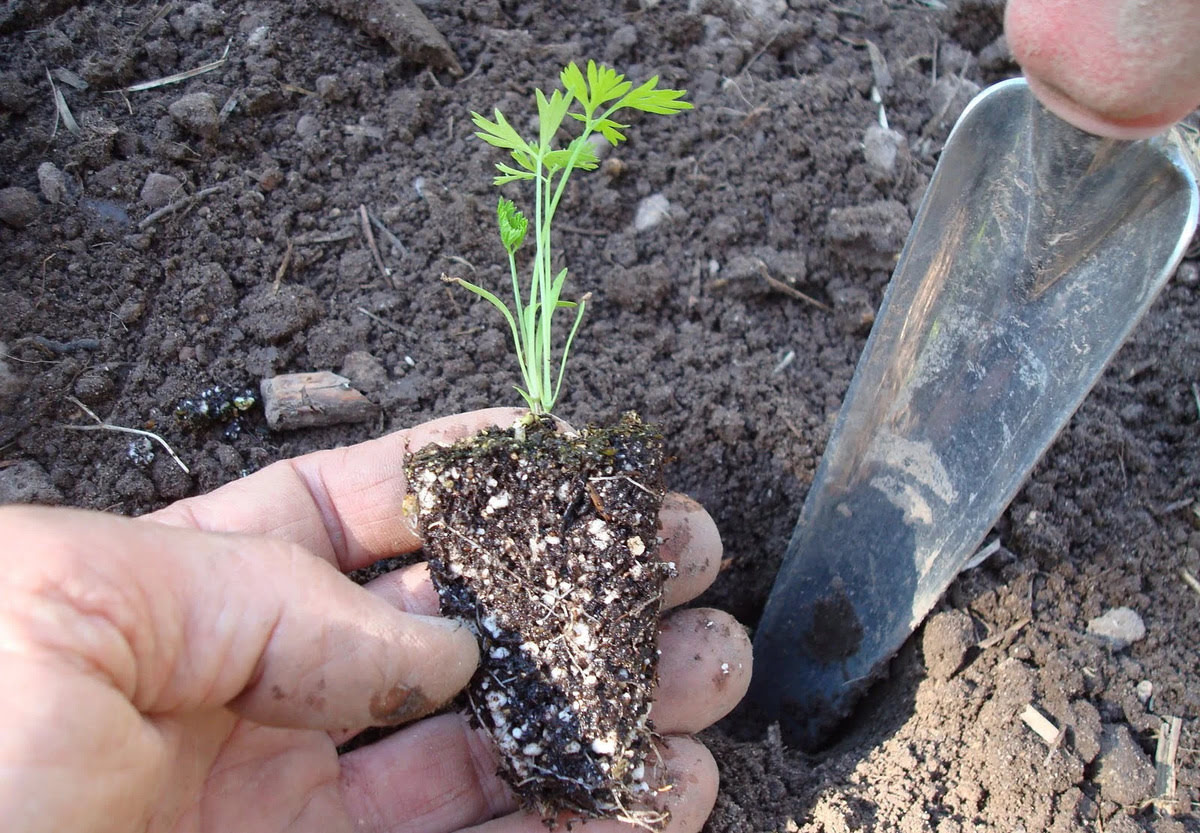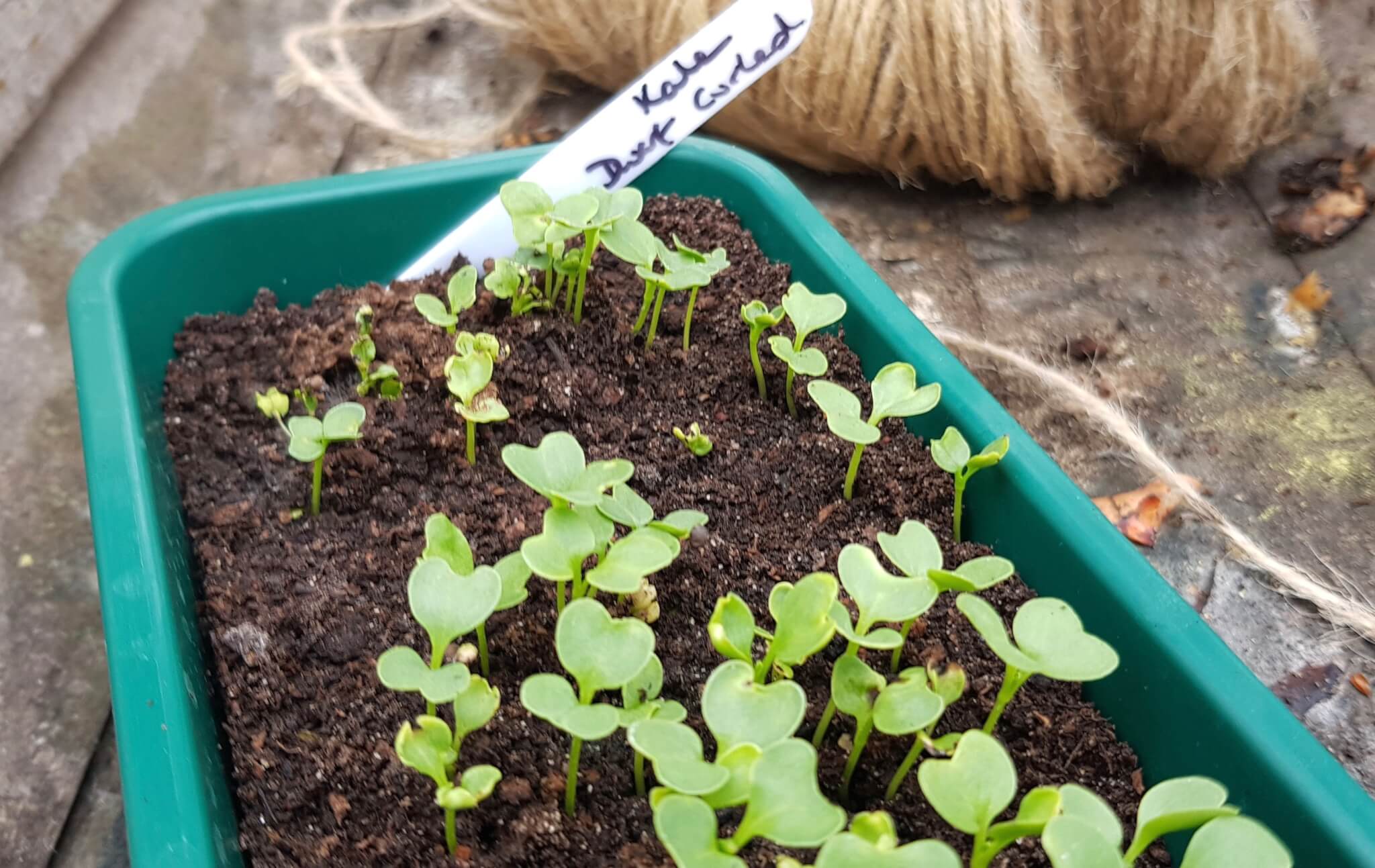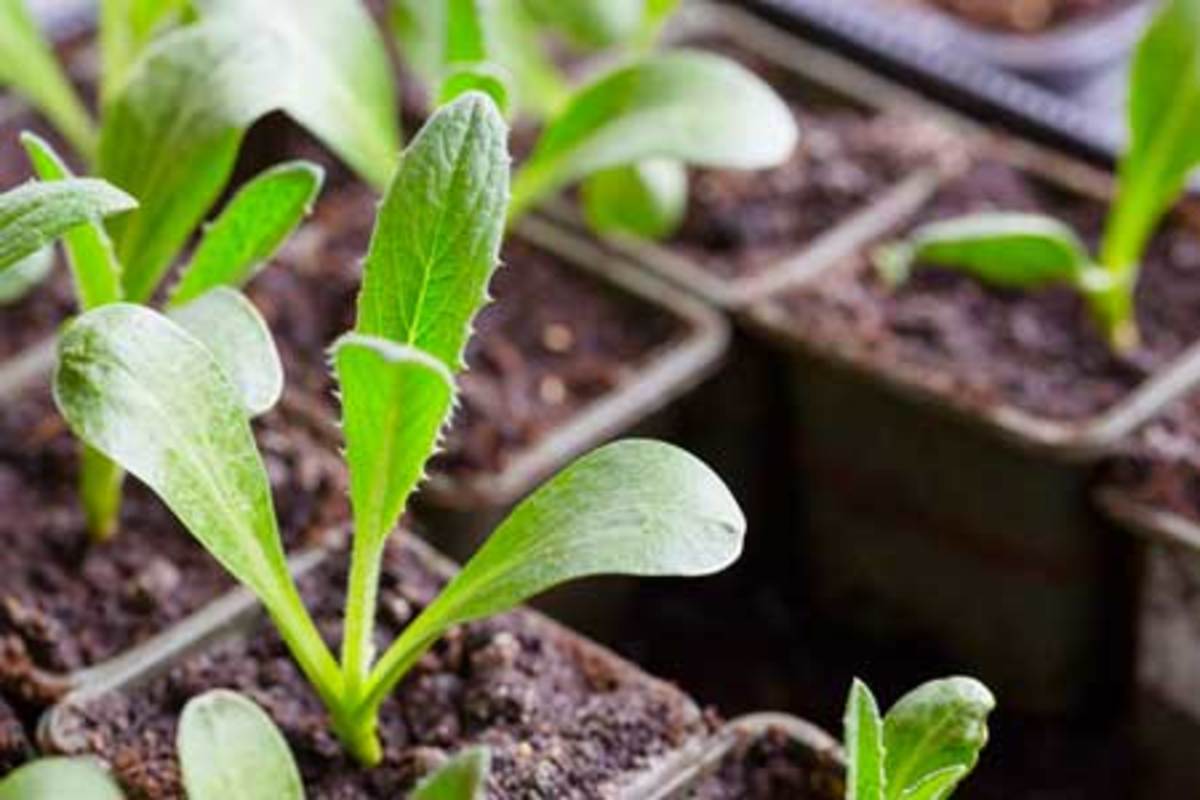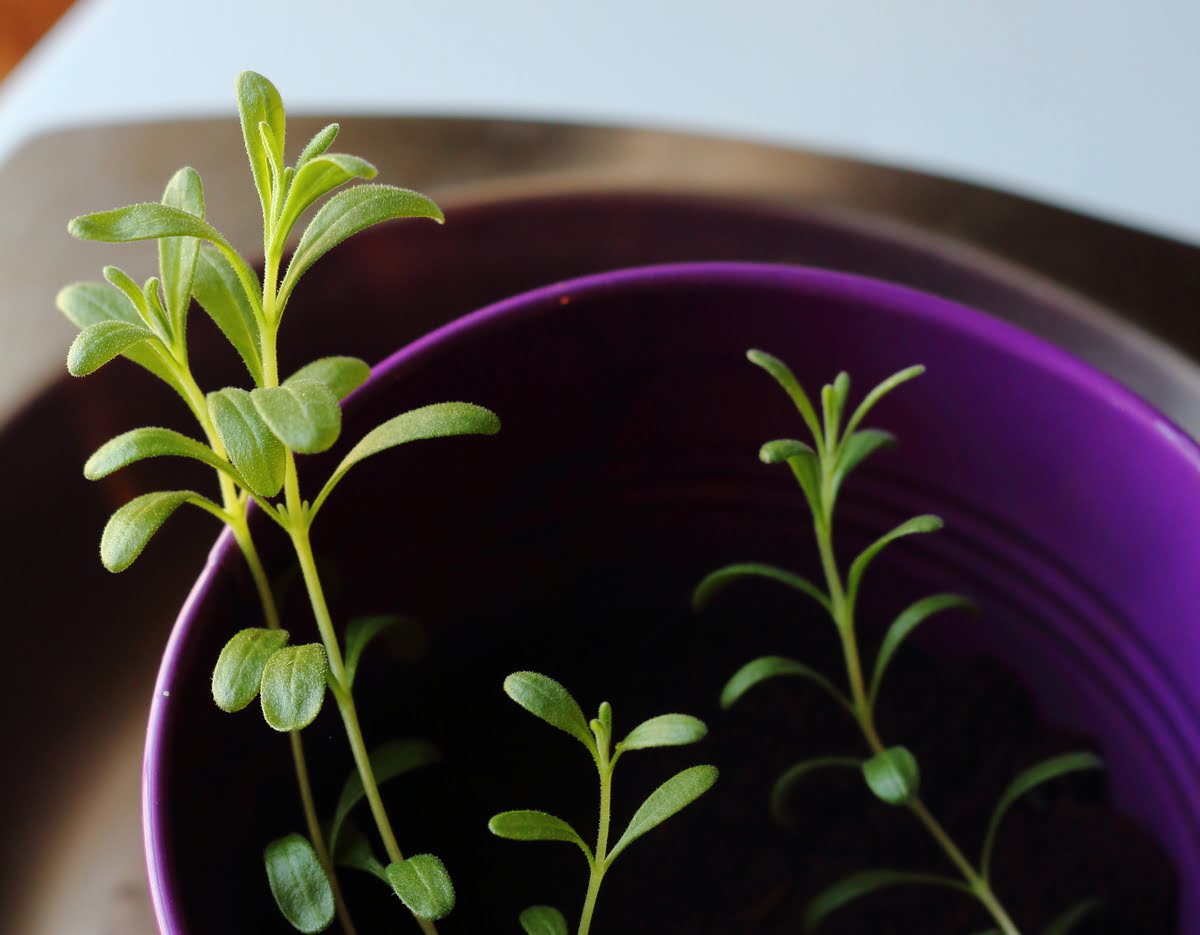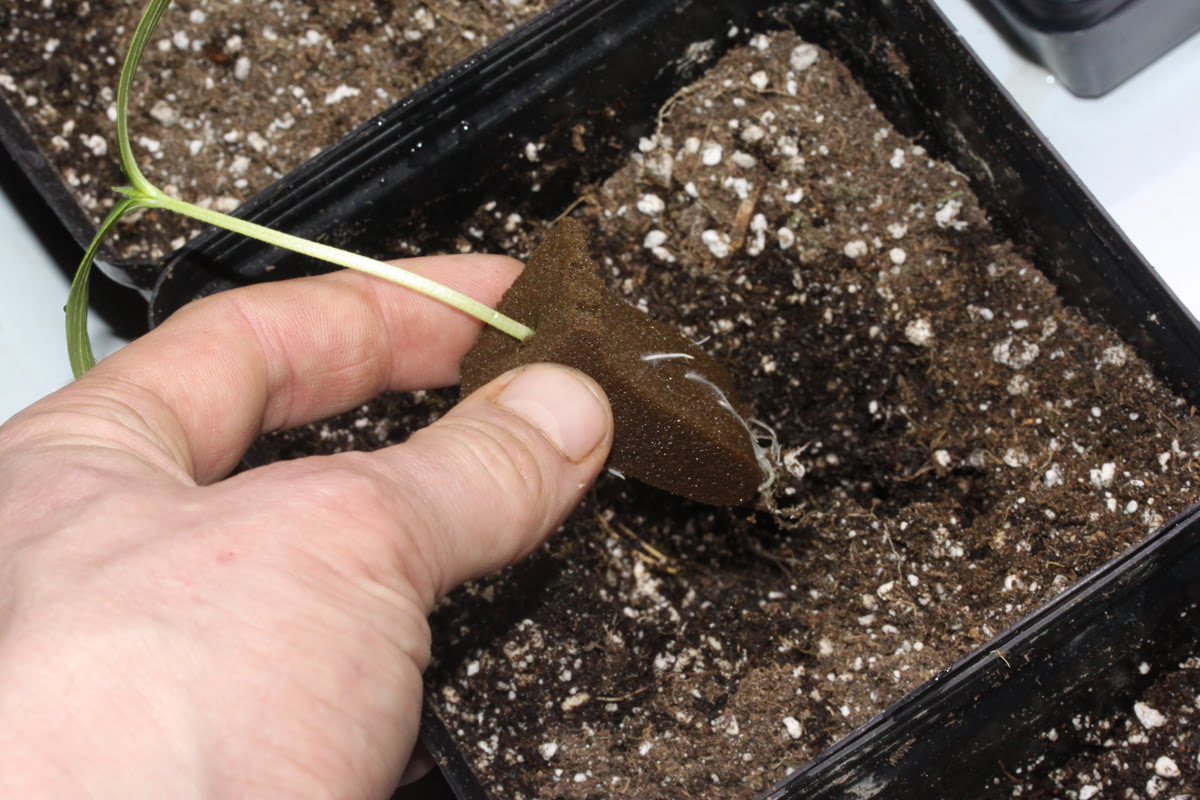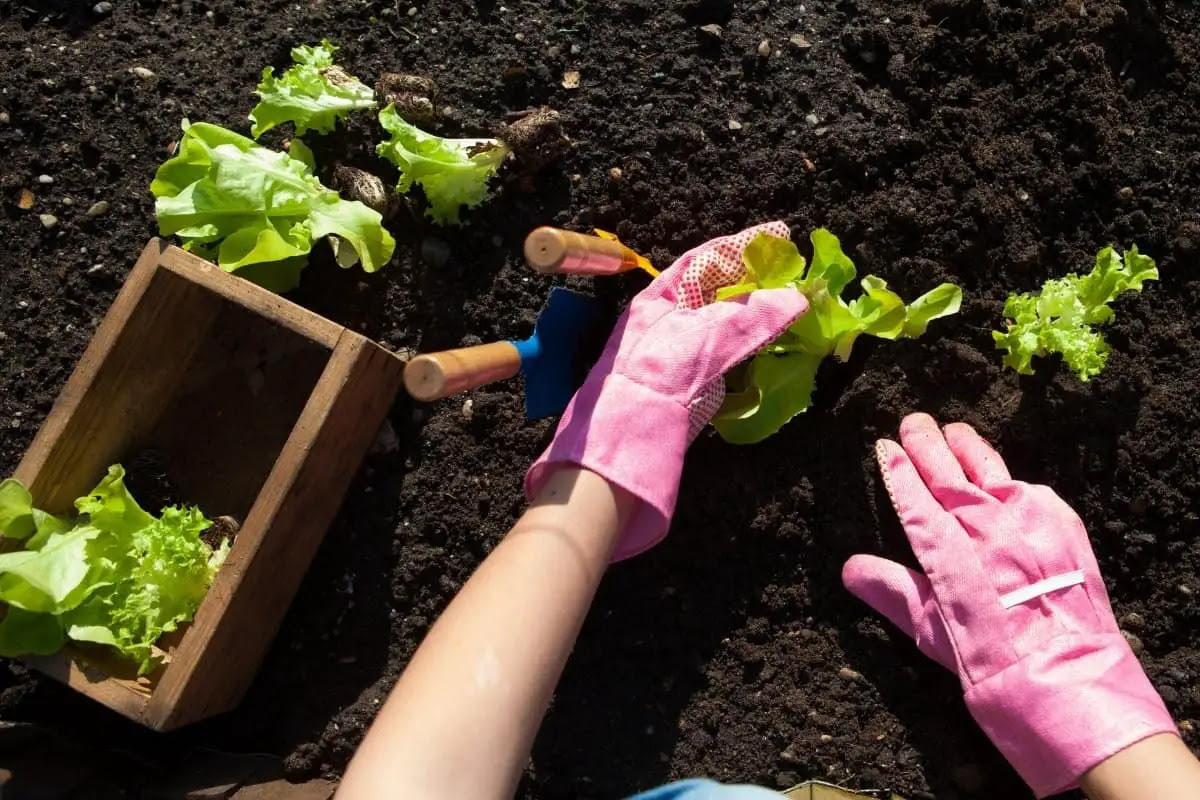Home>Types of Gardening>Ornamental Gardening>When To Transplant Seedlings Cannabis


Ornamental Gardening
When To Transplant Seedlings Cannabis
Modified: January 22, 2024
Learn when to transplant seedlings in cannabis for optimal growth and success in your ornamental gardening endeavors. Gain expert insights and tips from our comprehensive guide.
(Many of the links in this article redirect to a specific reviewed product. Your purchase of these products through affiliate links helps to generate commission for Chicagolandgardening.com, at no extra cost. Learn more)
Table of Contents
- Introduction
- Benefits of Transplanting Seedlings
- Factors to Consider Before Transplanting
- When to Transplant Seedlings
- Signs that Seedlings are Ready for Transplanting
- Preparing Seedlings for Transplant
- Transplanting Technique
- Aftercare of Transplanted Seedlings
- Common Mistakes to Avoid During Transplantation
- Conclusion
Introduction
Welcome to the fascinating world of ornamental gardening! Whether you are an experienced gardener or just starting out, ornamental gardening can be a rewarding and fulfilling hobby. It allows you to create stunning outdoor spaces filled with beautiful and vibrant plants, adding charm and elegance to your home.
Ornamental gardening is all about cultivating and showcasing plants for their aesthetic qualities. From colorful flowers to unique foliage, ornamental plants are carefully selected and arranged to create visually appealing landscapes, gardens, and containers.
In this comprehensive guide, we will explore the art of ornamental gardening in-depth, covering various aspects of this rewarding pastime. From choosing the right plants to caring for them throughout the seasons, we will provide you with the knowledge and tools needed to create your own stunning ornamental garden.
Whether you have a small balcony, a spacious backyard, or even just a few pots on a sunny windowsill, there are endless possibilities for creating a beautiful ornamental garden. You can choose from a wide array of plant species, including flowering plants, shrubs, ferns, succulents, and ornamental grasses.
Ornamental gardening goes beyond just planting and arranging flowers. It involves careful landscape design, understanding the specific needs of different plant species, and creating harmonious color schemes and textures. By mastering the art of ornamental gardening, you can transform any outdoor space into a serene and enchanting oasis.
This guide will serve as your roadmap to success, providing you with valuable insights and practical tips to make your ornamental gardening journey a breeze. From selecting the right plants for your garden to maintaining their health and beauty, we will cover it all. So, let’s dive in and unlock the secrets of ornamental gardening!
Benefits of Transplanting Seedlings
Transplanting seedlings is a crucial step in the journey of cultivating a successful garden. It involves transferring young plants from a seedling tray or small container into a larger planting space, such as a garden bed or a larger pot. While it may seem like an additional task, transplanting seedlings offers a range of benefits that contribute to the overall health and vitality of your plants. Let’s explore some of these benefits:
- Stronger Root Development: Transplanting seedlings allows the roots to spread and establish themselves in a larger area. When confined to a small container, the roots can become pot-bound, resulting in stunted growth. By transplanting seedlings, you provide them with ample room to develop a robust root system, which is essential for nutrient uptake and overall plant stability.
- Better Nutrient Availability: As seedlings grow, their nutritional requirements increase. By transplanting them into nutrient-rich soil or a larger container, you provide them with a fresh supply of nutrients. This ensures that the plants have access to the necessary elements for healthy growth and development.
- Improved Air Circulation: Transplanting seedlings into larger spaces allows for better air circulation around the roots and foliage. Adequate air movement is crucial in preventing the buildup of excess moisture, which can lead to root rot and fungal diseases. Improved air circulation also helps strengthen the stems, reducing the risk of bending or breaking.
- Enhanced Disease and Pest Resistance: When seedlings are transplanted into a larger and healthier environment, they are more equipped to defend against diseases and pests. Strong root development and optimal nutrition help to strengthen the overall immune system of the plants, making them less susceptible to common garden ailments.
- Increased Yield: By transplanting seedlings at the appropriate time, you can maximize the yield of your plants. When seedlings are given ample space to grow and develop, they can focus their energy on producing flowers, fruits, or foliage, resulting in a bountiful harvest.
Transplanting seedlings is a beneficial practice that sets the stage for healthy and vigorous plant growth. It is essential to consider the specific requirements of each plant species and ensure that the timing of the transplant aligns with their needs. By paying attention to this critical step, you will set your ornamental garden up for success and enjoy the numerous rewards of a thriving and beautiful landscape.
Factors to Consider Before Transplanting
Before you embark on the process of transplanting seedlings, it is important to consider several factors that will ensure the success of the transplantation and the subsequent growth of your plants.
1. Growth Stage: Transplanting seedlings too early can shock their delicate root systems, while transplanting them too late can result in overcrowded and root-bound plants. It is crucial to assess the growth stage of your seedlings and determine the appropriate time for transplantation based on their specific requirements.
2. Weather Conditions: The weather plays a significant role in the success of transplanting seedlings. Extreme temperatures, high winds, or heavy rains can stress the young plants and impede their ability to establish themselves in their new environment. Choose a day with mild and favorable weather conditions to minimize stress and promote healthier growth.
3. Soil Preparation: Prepare the soil or growing medium before transplanting seedlings. Ensure that it is well-draining and enriched with organic matter to provide the necessary nutrients for the plants’ growth. Additionally, remove any weeds or debris from the planting area to minimize competition for resources.
4. Transplanting Equipment: Gather all the necessary tools and equipment before undertaking the transplanting process. This may include pots or containers for the seedlings, a trowel or garden fork for digging, and watering cans or hoses for irrigation. Having everything ready beforehand will make the process smoother and more efficient.
5. Plant Specific Requirements: Different plant species have varying needs when it comes to transplantation. Some may prefer to be transplanted when they have a few true leaves, while others thrive when they have a more established root system. Research the specific requirements of your plants to ensure that you transplant them at the optimal stage of their growth.
6. Transplanting Location: Consider the final location of your plants before transplanting. Ensure that the area provides the appropriate amount of sunlight, shade, and space for the plants to thrive. Take into account factors such as soil pH, moisture levels, and proximity to other plants to create an ideal growing environment.
By taking these factors into consideration before transplanting your seedlings, you set the stage for a successful transition and promote the long-term health and vitality of your plants. Planning and preparation are essential in ensuring that your ornamental garden flourishes and delights your senses for years to come.
When to Transplant Seedlings
The timing of transplanting seedlings is crucial for their successful establishment and growth in their new environment. Transplanting too early or too late can lead to stress and hinder their ability to thrive. Here are some factors to consider when determining the appropriate time to transplant your seedlings:
- Seedling Size: Transplanting should typically be done when the seedlings have reached a certain size and strength. They should have developed a few sets of true leaves and a sturdy stem. This indicates that their root systems are established enough to withstand the transplanting process.
- Weather Conditions: The weather plays a significant role in determining the ideal time for transplanting. Wait until the threat of frost has passed and temperatures are consistently mild. Transplanting during cooler periods or in the early morning or evening can help minimize stress on the seedlings.
- Growth Speed: Different plant species have varying growth rates, so the timing of transplantation can vary. Some plants grow quickly and may require earlier transplanting, while others grow more slowly and benefit from more time in the seedling stage. Research the specific growth habits of your plants to determine the ideal timing.
- Root Development: It is crucial to ensure that the seedlings’ root systems have enough room to grow before transplanting. If the roots have become bound within the current container, the seedlings can be gently teased apart or given more time to develop before transplanting.
- Outdoor Readiness: Seedlings need to be hardened off before being transplanted outdoors. This involves gradually exposing them to outdoor conditions, such as sunlight and wind, over a period of one to two weeks. Hardening off strengthens the plants and prepares them for the environmental changes they will face after transplantation.
Transplanting seedlings at the right time will promote their successful adaptation to the new planting space and give them the best chance at healthy growth. It is important to consider the specific requirements of your plants and take into account factors such as their size, growth speed, and environmental conditions. By transplanting seedlings at the optimal time, you set the stage for a thriving and vibrant ornamental garden.
Signs that Seedlings are Ready for Transplanting
Transplanting seedlings at the right time is crucial for their successful establishment in their new growing environment. It is important to look for specific signs to determine when your seedlings are ready for transplantation. Here are some indicators that your seedlings are prepared for the next stage of their growth:
- Sturdy Stem: Seedlings that are ready for transplanting have developed sturdy stems. They should be able to support themselves without drooping or bending excessively. A strong stem indicates that the seedlings have grown enough to handle the stress of transplantation.
- True Leaves: While seedlings initially start with cotyledons, or seed leaves, true leaves eventually emerge. These leaves are the characteristic foliage of the plant species and differ from the initial seed leaves. When the seedlings have developed a few sets of true leaves, it is usually a sign that they are ready to be transplanted.
- Roots Visible at Bottom: Carefully lift the seedlings or gently lift them from their containers to check the root growth. If you see roots starting to appear at the bottom of the container or tray, it indicates that the seedlings have established a root system and are ready for transplantation.
- Roots Not Overcrowded: Examine the root system to ensure that it is not pot-bound or overcrowded. If the roots have densely filled the container or become tangled, it may be necessary to transplant the seedlings to larger pots or directly into the garden bed to provide more space for root expansion.
- Healthy Foliage: Seedlings that are ready for transplanting should have vibrant and healthy foliage. Look for leaves that are green and free from discoloration, spots, or signs of disease or pest damage. Healthy foliage indicates that the seedlings are strong enough to withstand transplantation.
It is important to note that these signs may vary depending on the specific plant species. Some plants may have different growth patterns and may require specific cues for transplanting. Therefore, it is always beneficial to research the specific requirements of your plant species to ensure optimal timing for transplantation.
By observing these signs and using them as a guide, you can ensure that your seedlings are in the best condition for successful transplantation. This will give them a solid foundation for healthy growth and development in their new environment.
Preparing Seedlings for Transplant
Proper preparation of seedlings before transplanting is essential to ensure their successful transition and subsequent growth in their new location. Taking the time to prepare the seedlings will help minimize stress and increase their chances of thriving in their new environment. Here are some steps to follow when preparing seedlings for transplant:
- Water the Seedlings: Before transplanting, make sure the seedlings are well-hydrated. Water them thoroughly a day or two before transplanting to ensure that the root ball is moist but not waterlogged. This will help ease the transplant shock and ensure better root-to-soil contact.
- Harden Off the Seedlings: If the seedlings have been growing indoors, they need to be gradually acclimated to outdoor conditions. This process, known as hardening off, involves exposing the seedlings to increasing amounts of sunlight, wind, and outdoor temperatures over a period of 7 to 10 days. Start by placing the seedlings outdoors for a few hours each day and gradually increase the duration and intensity of exposure.
- Prepare the Transplanting Area: If you’re transplanting the seedlings into the garden bed, prepare the soil in advance. Remove any weeds, rocks, or debris and loosen the soil to improve drainage and aeration. Adding compost or organic matter will provide additional nutrients for the seedlings.
- Choose the Right Transplanting Containers: If you’re transplanting the seedlings into individual containers or pots, make sure they are clean and have adequate drainage holes. Choose containers that are large enough to accommodate root growth and provide proper air circulation around the roots.
- Follow Transplanting Guidelines: Different plant species have varying transplanting requirements. Some plants may require deeper holes, while others may need to be placed at the same level as they were in their previous containers. Research the specific instructions for your seedlings to ensure proper planting depth and spacing.
- Handle the Seedlings Carefully: When removing the seedlings from their original containers, handle them with care to avoid damaging the delicate roots. Gently loosen the root ball with your fingers or a dull object, such as a pencil, if the roots are tightly intertwined. Avoid pulling the seedlings by their stems, as this can cause damage.
By following these preparation steps, you will set your seedlings up for success and improve their chances of thriving after transplanting. Taking the time to properly water, harden off, and handle the seedlings, as well as preparing the transplanting area, will help minimize stress and promote healthy growth.
Remember, the health and vitality of your seedlings depend on proper preparation, so don’t rush the transplanting process. By taking these precautions, you will give your seedlings the best possible start in their new growing environment.
Transplanting Technique
Transplanting seedlings is a delicate process that requires proper technique to ensure their successful establishment in their new planting location. By following the right steps, you can minimize stress on the plants and help them thrive. Here are some transplanting techniques to keep in mind:
- Prepare the Transplanting Hole: Dig a hole in the garden bed or a container that is slightly larger and deeper than the root ball of the seedling. Ensure that the hole is wide enough to accommodate the roots without crowding them. This will provide ample space for the roots to spread out and establish themselves.
- Handle the Seedling with Care: When removing the seedling from its original container, handle it gently by the leaves or the root ball. Avoid pulling the seedling by its delicate stem, as this can damage the plant. If the roots are tightly bound, gently loosen them with your fingers to encourage outward growth.
- Place the Seedling in the Hole: Carefully place the seedling in the prepared hole, making sure it sits at the same level it was in its previous container. Avoid burying the stem too deep, as this can lead to rotting. Position the seedling in the center of the hole and hold it upright while backfilling the hole with soil.
- Backfill and Firm the Soil: Gently backfill the hole with soil, taking care not to damage the roots or compress the soil too tightly. Lightly firm the soil around the base of the seedling to provide stability but avoid compacting the soil excessively, as it can hinder root growth and water drainage.
- Water the Transplanted Seedling: After transplanting, water the seedling thoroughly to settle the soil and eliminate air pockets. Ensure that the water reaches the roots and moistens the surrounding soil. This will help the roots establish contact with the soil and promote faster recovery.
- Provide Adequate Post-Transplant Care: After transplanting, continue to monitor and care for the seedlings to ensure their successful transition. Water them regularly, keeping the soil evenly moist but not saturated. Protect the seedlings from extreme weather conditions, such as strong winds or excessive heat, until they are well-established.
Remember, each plant species may have specific transplanting requirements, so it’s important to research and understand the unique needs of your seedlings. By following these transplanting techniques and providing proper aftercare, you can help your seedlings thrive in their new environment and set the stage for a flourishing ornamental garden.
Aftercare of Transplanted Seedlings
Proper aftercare is crucial for the successful growth and establishment of transplanted seedlings. While the transplanting process is a critical step, it is equally important to provide the necessary care and attention to ensure the long-term health and vitality of the plants. Here are some key practices to follow for the aftercare of transplanted seedlings:
- Watering: Adequate watering is essential to help transplanted seedlings recover and establish their roots in the new soil. Water the seedlings regularly, keeping the soil moist but not waterlogged. The frequency of watering will depend on factors such as weather conditions, plant species, and soil type. Monitor the soil moisture level and adjust the watering accordingly.
- Mulching: Applying a layer of organic mulch around the transplanted seedlings can help conserve soil moisture, suppress weed growth, and regulate soil temperature. Spread mulch, such as wood chips or straw, around the base of the plants, leaving a small space around the stem to prevent rotting.
- Protection from Extreme Conditions: Shield the transplanted seedlings from extreme weather conditions until they are well-established. Use shade cloth, row covers, or protective structures to provide shade during hot and sunny days. Likewise, protect them from strong winds, frost, or heavy rain by using temporary covers or erecting windbreaks.
- Monitor for Pests and Diseases: Keep a close eye on the transplanted seedlings for any signs of pests or diseases. Regularly inspect the leaves, stems, and soil for any unusual changes or symptoms. If any issues are detected, promptly take appropriate measures, such as organic pest control methods or disease treatments, to prevent further damage.
- Fertilizing: Depending on the specific needs of the plants, you may need to provide additional nutrients to transplanted seedlings. Apply a balanced fertilizer following the recommended dosage and frequency. However, be cautious not to over-fertilize, as this can lead to nutrient imbalances or plant burn. Always follow the instructions provided by the fertilizer manufacturer.
- Pruning: If necessary, prune the transplanted seedlings to promote bushier growth and remove any damaged or diseased parts. Pruning can also help redirect energy towards healthy growth and enhance the overall shape of the plants. Use sharp and clean pruning tools to minimize any damage or infection.
By following these aftercare practices, you can help transplanted seedlings adapt and thrive in their new environment. Remember, the needs of the plants may vary, so it’s important to consider the specific requirements of each species. Regular monitoring, timely interventions, and consistent care will contribute to the long-term success of your ornamental garden.
Common Mistakes to Avoid During Transplantation
Transplanting seedlings can be a critical step in the journey of establishing a healthy and thriving garden. However, there are common mistakes that gardeners often make during the transplantation process that can hinder the success of their plants. By being aware of these mistakes, you can avoid them and increase the chances of a successful transplantation. Here are some common mistakes to avoid:
- Transplanting Too Early: One of the biggest mistakes is transplanting seedlings too early. If the seedlings are not sufficiently mature with a well-developed root system, they may struggle to adapt to their new environment. Wait until the seedlings have grown a few sets of true leaves and have sturdy stems before transplanting them.
- Transplanting Too Late: On the other hand, delaying the transplanting of seedlings for too long can also be detrimental. Overcrowded root systems in small containers can lead to stunted growth and hinder the overall health of the plants. Transplant the seedlings in a timely manner to provide ample space for root development.
- Not Watering Properly: Proper watering is crucial for the success of transplanted seedlings. Overwatering can lead to root rot, while underwatering can cause root stress and dehydration. Find the right balance by providing sufficient moisture without waterlogging the soil.
- Handling the Seedlings Roughly: Seedlings are delicate, and mishandling them can cause damage to their stems or roots. Avoid pulling the seedlings by their stems, as this can result in breakage. Handle them gently by their leaves or root ball, taking care not to disturb the roots excessively.
- Ignoring Hardening Off: Neglecting to harden off seedlings before transplantation can shock the plants and hinder their adaptation to outdoor conditions. Gradually introduce the seedlings to outdoor elements, such as sunlight, wind, and temperature changes, over a period of time to help them acclimate.
- Not Providing Proper Support: Some transplanted seedlings may require additional support, especially if they have tall stems or weak growth habits. Neglecting to provide stakes or supports can lead to bending or breaking of the stems, compromising the overall structure and health of the plants.
- Planting Too Deep or Too Shallow: Improper planting depth can be detrimental to the transplanted seedlings. Planting too deep can lead to stem rot, while planting too shallow can expose the roots and cause them to dry out. Follow the planting guidelines specific to each plant species to ensure proper depth.
By avoiding these common mistakes, you can increase the chances of successful transplantation and support the healthy growth and development of your ornamental plants. Take the time to assess each step of the transplantation process and ensure that you are providing the best possible care for your seedlings.
Conclusion
Congratulations! You have now gained valuable insights into the art of transplanting seedlings in ornamental gardening. Transplanting is a critical step that sets the foundation for the healthy growth and flourishing of your plants. By considering factors such as the growth stage, weather conditions, and root development, you can determine the optimal time for transplanting.
Being able to identify signs that seedlings are ready for transplanting, and preparing them carefully by watering, hardening off, and handling with care, increases the chances of successful transplantation. Following the right technique, such as preparing the transplanting hole, backfilling the soil, and providing adequate aftercare, further supports the plants’ growth and establishment.
It’s important to avoid common mistakes like transplanting too early or too late, improper watering, rough handling of seedlings, neglecting to harden off, and not providing proper support. By steering clear of these pitfalls, you can give your transplanted seedlings the best chance at thriving in their new environment.
Remember to continue caring for your transplanted seedlings by watering appropriately, monitoring for pests and diseases, providing necessary fertilization, and offering protection from extreme conditions. Stay vigilant and make adjustments as needed to ensure the long-term health and vitality of your ornamental plants.
With this comprehensive guide to transplanting seedlings in ornamental gardening, you are well-equipped to create stunning outdoor spaces filled with vibrant and beautiful plants. Enjoy the journey of nurturing your ornamental garden and witness your hard work blooming into a captivating and enchanting oasis. Happy gardening!
